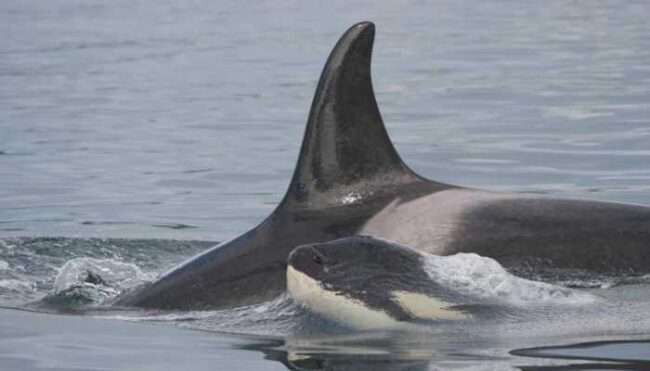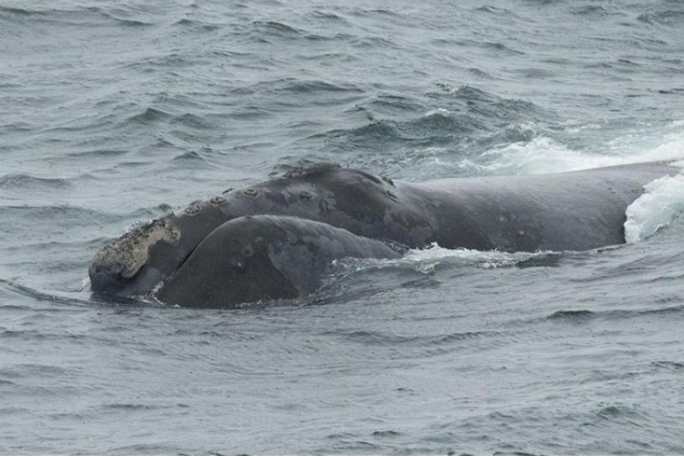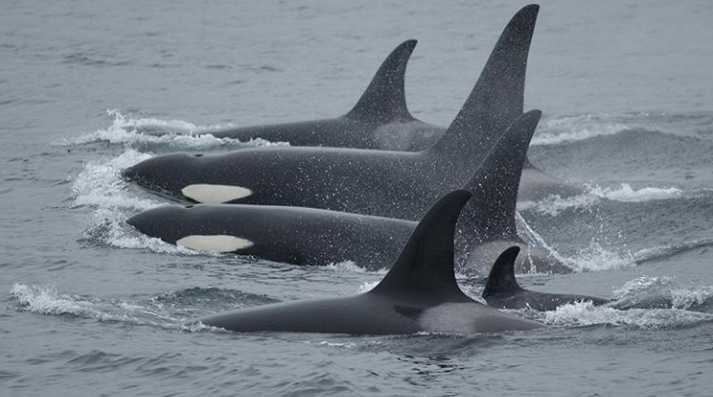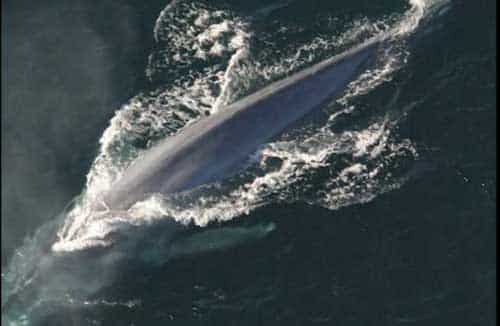The small size and isolation of the endangered population of Southern Resident killer whales in the Pacific Northwest have led to high levels of inbreeding. This inbreeding has contributed to their decline, which has continued as surrounding killer whale populations expand, according to research published in Nature Ecology and Evolution.
The groundbreaking new study combined modern genomics with decades of careful field observations. An international team of researchers filled a major gap in our understanding of why the Southern Resident killer whale population is failing to thrive.
Newly sequenced genomes from the 73-whale population indicate that inbreeding is an important problem, in addition to human impacts such as marine park captures decades ago. Other well-known factors contributing to their decline include disturbance, contaminants, and possible prey limitations.
By reducing their survival, inbreeding can cut the lifespan of whales nearly in half. Without a genetic influx from other populations or some other major improvement in environmental conditions, inbreeding is likely to continue the decline.
“These results demonstrate that inbreeding depression can substantially limit the recovery of endangered populations,” the researchers concluded.
“This is hard news for everyone who cares about this unique population of killer whales so closely tied to the Northwest,” said Marty Kardos, a research geneticist at NOAA Fisheries’ Northwest Fisheries Science Center and a lead author of the new research. “At the same time, this begins to answer long-standing questions about why substantial recovery efforts have not produced the results we hoped for, and what the future options might be.”
Southern Resident Genome Sequenced
The research includes the first major findings from the sequencing of the Southern Resident genome that began in 2018. It was undertaken in collaboration with the genomics company BGI and The Nature Conservancy. The project has decoded the DNA of about 100 Southern Resident killer whales, including some that have died in recent years. It also looked at whales from other populations in the northeast Pacific Ocean.
“For a long time, we’ve struggled to understand why this population has consistently lower survival and birth rates than other killer whales in the region, and this research highlights a strong link between inbred individuals and increased risk of death,” said Eric Ward, a statistician at the science center and coauthor of the research. “It’s a view we’ve never had before, and it begins to fill a gap in our understanding.”
Addressing Known Threats
Historically, researchers have focused on three main threats to the Southern Resident population:
- Fluctuations in salmon prey
- Toxic pollutants
- Disturbance and noise from ships and other vessels
NOAA Fisheries’ 2008 Recovery Plan cited inbreeding as a concern, but only recently have scientists had the technology to measure its effects on the population.
The new research indicates that inbreeding strongly limits the population’s growth and recovery, making the whales more vulnerable to other threats. That underscores the urgency of addressing the other threats to the whales by restoring salmon habitat and other means, said Brad Hanson, a research scientist at the Northwest Fisheries Science Center in Seattle who leads field research on the whales.
“The whales are not necessarily dying of inbreeding itself, they are dying prematurely because inbreeding has set them up to be more vulnerable to diseases or other problems,” he said. “We need to minimize the potential for those factors to have an impact.”
Inbreeding Reduces Life Span
Killer whales first reproduce at about 10 years old and reach their reproductive prime in their early twenties. Highly inbred Southern Residents had less than half the chance of surviving through those prime years to reach 40, compared to the least inbred individuals, the new analysis showed. Female whales with low levels of inbreeding live long enough to produce an average of 2.6 offspring over their lifetimes. Those with high levels of inbreeding produce an average of 1.6 offspring during their shorter lives.
Animal populations must produce at least two surviving offspring per female to remain stable or increase in number.
Wildlife managers often address inbreeding in small populations by captive breeding in zoos or aquaria, or by adding genetic diversity by introducing animals from other areas. However, that is unlikely to help the Southern Residents, which choose not to breed with other killer whales. They are known to encounter other killer whales in their home waters but reproduce only within their own population.
In the 1960s and 1970s, marine parks removed about 50 resident killer whales from the Salish Sea. Others died in the captures. Most were Southern Resident Killer whales. That reduced the genetic diversity of what was already an isolated population. It could have also put the population at a competitive disadvantage as other fish-eating killer whale populations in the northeast Pacific Ocean tripled in number, creating more competition for salmon prey.
Few Whales Dominate
Earlier genetic research was led by senior scientist Michael Ford of the Northwest Fisheries Science Center, a co-author of the current study. It showed that Southern Residents often mate within their family groups. The 2018 analysis found that two male whales had fathered more than half of the calves born since 1990 from which scientists have samples. That dominant role of a few whales prevents genetic mixing that could otherwise help avoid inbreeding and adapt to environmental changes.
Only about 26 of the 76 endangered whales in the Southern Resident population were breeding at the time. Reducing the effective size of the population increased the potential for inbreeding and compromised the survival of individual animals. This reduced survival has contributed to a lack of consistent population growth, including a decline from a high of almost 100 whales in the mid-1990s to 73 now.
Scientists used models to project the future of the population, assuming environmental conditions typical of the average of the last several decades. When they assumed that all whales had the same survival probability as the least inbred animals, the population increased. However, when they applied the actual survival odds of the population with inbreeding, the number declined.
“It would be a mistake to see this as inbreeding alone causing the decline,” Ward said. “Over the last 50 years, this population has been impacted by multiple stressors, and the relative impact of various threats on the Southern Resident population has fluctuated through time. These combined impacts, coupled with the mating system of killer whales—where only a few males are contributing to the gene pool—may have made inbreeding a more significant threat in recent years.”
Northwest Fisheries Science Center
[content id=”79272″]








